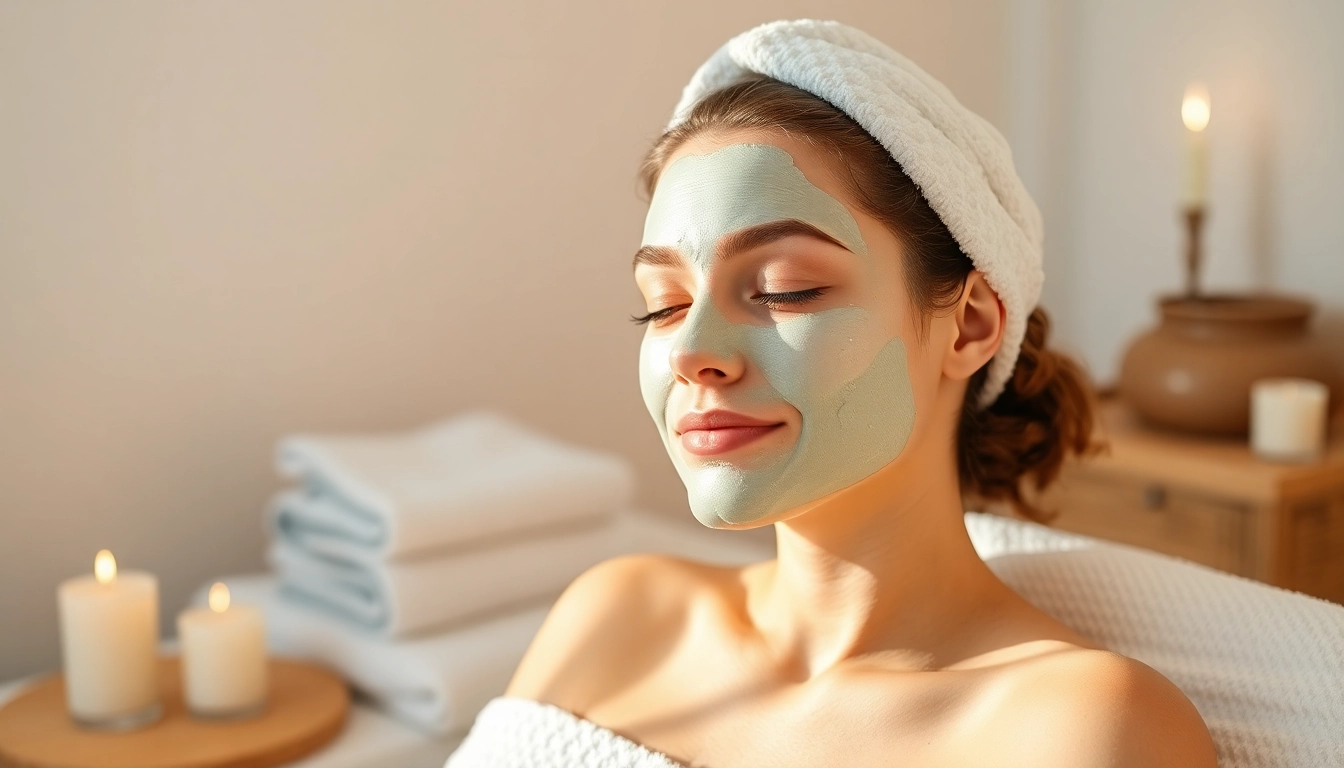Understanding Facial Masks: An Overview
What is a Facial Mask?
Facial masks represent a staple in the beauty and skincare industry. These products are designed to be applied to the face for a predetermined period, typically ranging from 10 to 30 minutes, depending on the formulation and purpose. Essentially, they act as a concentrated treatment that delivers active ingredients directly to the skin, aiming to address a variety of skin concerns such as dryness, pigmentation, or blemishes. While they can be used for a quick refresh, regular application can yield long-lasting benefits for your complexion. It’s also essential to note the significance of quality products, and for those interested in exploring various options, a well-formulated facial mask can contribute significantly to your skincare routine.
Different Types of Facial Masks
Facial masks come in a variety of formulations, each catering to specific skin types and concerns. Here’s a closer look at some of the most popular types:
- Cream Masks: Thick and moisturizing, cream masks are typically rich in emollients and are ideal for dry or sensitive skin. They work by forming a barrier that hydrates and nourishes the skin.
- Clay Masks: Often favored for oily or acne-prone skin, clay masks help absorb excess oil and draw out impurities from the pores. They can make the skin feel cleaner and refreshed.
- Sheet Masks: These are pre-cut fabric masks soaked in essence or serum. They offer a quick and convenient way to deliver active ingredients and hydration, making them popular for a quick fix.
- Peel-Off Masks: These masks dry on the skin and are pulled away to remove dead skin cells and impurities. They provide immediate results and can enhance skin texture when used appropriately.
- Gel Masks: Light and refreshing, gel masks are great for hydration and calming sensitive skin. They have a cooling effect and are perfect for use during hot weather.
Key Ingredients in Facial Masks
The efficacy of a facial mask largely depends on its ingredients. Here are some key ingredients commonly found in facial masks:
- Hyaluronic Acid: Known for its incredible capacity to retain moisture, this ingredient is ideal for hydrating dry skin.
- Salicylic Acid: Commonly included in masks targeting acne, salicylic acid helps to exfoliate and unclog pores.
- Vitamin C: A powerful antioxidant that helps brighten the skin tone and improve texture, Vitamin C is often found in masks aimed at enhancing radiance.
- Charcoal: Known for its detoxifying properties, charcoal masks can help draw out impurities and control oiliness.
- Botanicals: Many masks include plant extracts such as aloe vera, green tea, or chamomile to soothe and nourish the skin.
Benefits of Facial Masks for Skin Health
Hydration and Moisture Retention
One of the primary benefits of facial masks is their ability to deeply hydrate the skin. Many masks are formulated with humectants such as glycerin and hyaluronic acid, which attract moisture and help the skin retain it. This is particularly beneficial for individuals with dry or dehydrated skin, as regular use of moisture-boosting masks can lead to a more supple and plump complexion.
Detoxification and Purification
Facial masks, especially those containing clay or activated charcoal, can purge the skin of impurities, toxins, and excess oils. This detoxifying effect not only helps clear out congested pores but also promotes a healthier skin barrier. The result is often clearer, brighter skin that appears more radiant.
Enhancing Skin Tone and Texture
Regular application of facial masks can enhance the overall tone and texture of the skin. Masks that contain exfoliating agents, like alpha hydroxy acids (AHAs), can help slough off dead skin cells, revealing a smoother and more even complexion. Moreover, ingredients like Vitamin C can brighten the skin, addressing issues such as hyperpigmentation or dullness.
How to Choose the Right Facial Mask
Identifying Your Skin Type
Understanding your skin type is crucial when selecting a facial mask. For example, dry skin may benefit from cream or hydrating masks filled with emollients, while oily skin types might opt for clay or charcoal masks designed to absorb oil. Combination skin may require a targeted approach, with different masks for different areas of the face. A patch test can also help identify how your skin reacts to specific ingredients.
Reading Labels: What to Look For
When browsing product labels, it’s essential to familiarize yourself with key terms and ingredients. Look for masks that outline their primary benefits clearly and have a short, comprehensible ingredient list. Avoid masks with excessive synthetic fragrances or alcohol, as they can irritate the skin.
Choosing Between DIY and Store-Bought
Both DIY and store-bought masks have their advantages. DIY masks allow for customization based on personal preferences and available ingredients, while store-bought masks often contain a higher concentration of active ingredients for targeted concerns. Consider factors such as convenience, possible allergens, and expected results when deciding between the two.
Application Techniques for Maximum Effect
Prep Your Skin Before Application
For optimal results, preparing your skin before applying a facial mask is essential. Start by cleansing your face to remove makeup, dirt, and oils. Follow this by exfoliating gently to eliminate dead skin cells, enhancing the absorption of the mask’s ingredients. Always remember to pat your skin dry before application.
Step-by-Step Application Guide
Follow these steps to apply a facial mask effectively:
- Apply Evenly: Using clean fingers or a brush, apply the mask evenly across your face, avoiding the eye and mouth areas.
- Monitor Time: Adhere to the recommended duration indicated on the product. Leaving the mask on too long can lead to irritation, while insufficient time might not yield desired results.
- Relax: Use this time to unwind—relaxation can also enhance the benefits of your mask.
Tips for Removing a Facial Mask Properly
When it’s time to remove the mask, do so gently. For peel-off masks, carefully peel from the edges towards the center to avoid pulling on the skin. For rinse-off masks, use lukewarm water and a soft cloth to wipe away the product. Follow up with a gentle pat-dry and a suitable moisturizer to lock in hydration.
Incorporating Facial Masks into Your Skincare Routine
Frequency of Use: Finding the Right Balance
The frequency with which you should use facial masks largely depends on your skin type and the mask’s formulation. Generally, using a mask once a week is sufficient for most skin types; however, certain treatments like clay masks may be used more frequently (up to twice a week) on oily skin. It’s advisable to adjust based on your skin’s response, being cautious not to overdo it, as this can lead to irritation or imbalance.
Complementing with Other Skincare Products
Facial masks can be effectively integrated into a broader skincare regimen. Pairing them with a tailored toner, serum, and moisturizer can amplify their benefits. For instance, using a hydrating toner before a moisture mask can boost hydration levels. Additionally, consider formulating your routine based on skin cycles, such as using exfoliating masks around the full moon when skin renewal peaks.
Tracking Skin Improvements Over Time
Maintaining a skincare journal can be beneficial. Documenting your observations about how your skin reacts—both positively or negatively—to different masks over time can help identify which types work best for you. Regularly taking photos can be helpful for visual reminders, allowing you to track improvements and gauge the effectiveness of your regimen.



